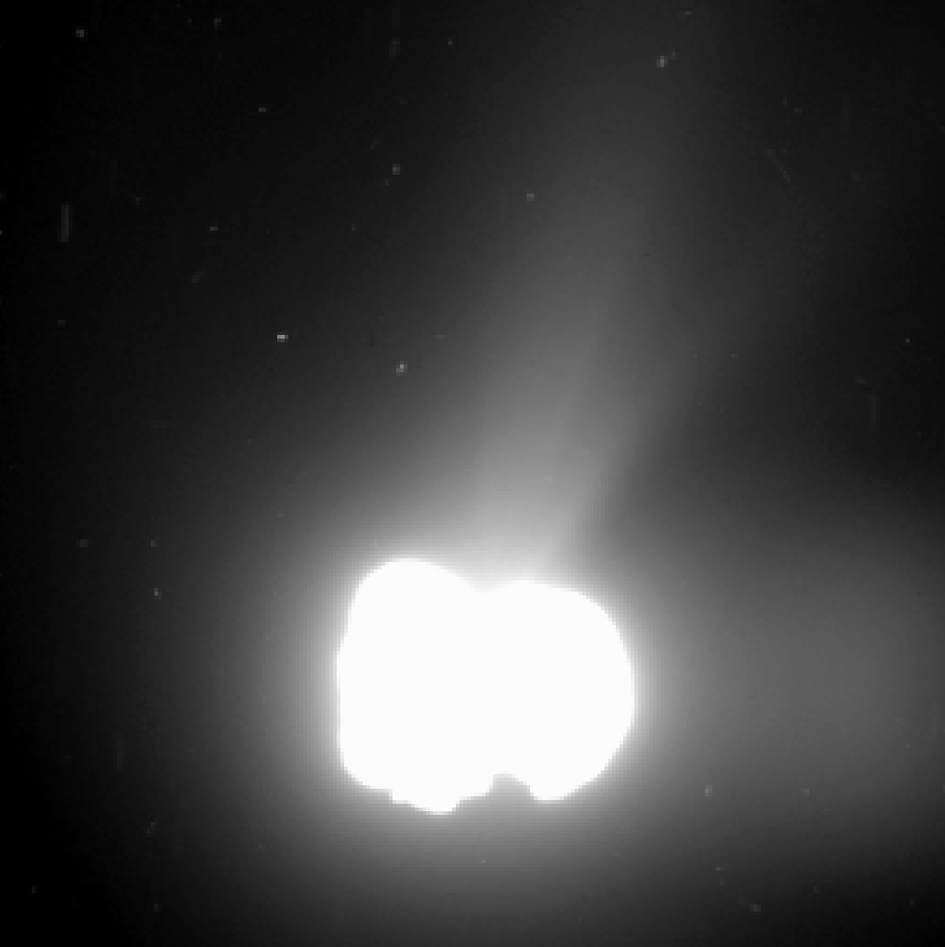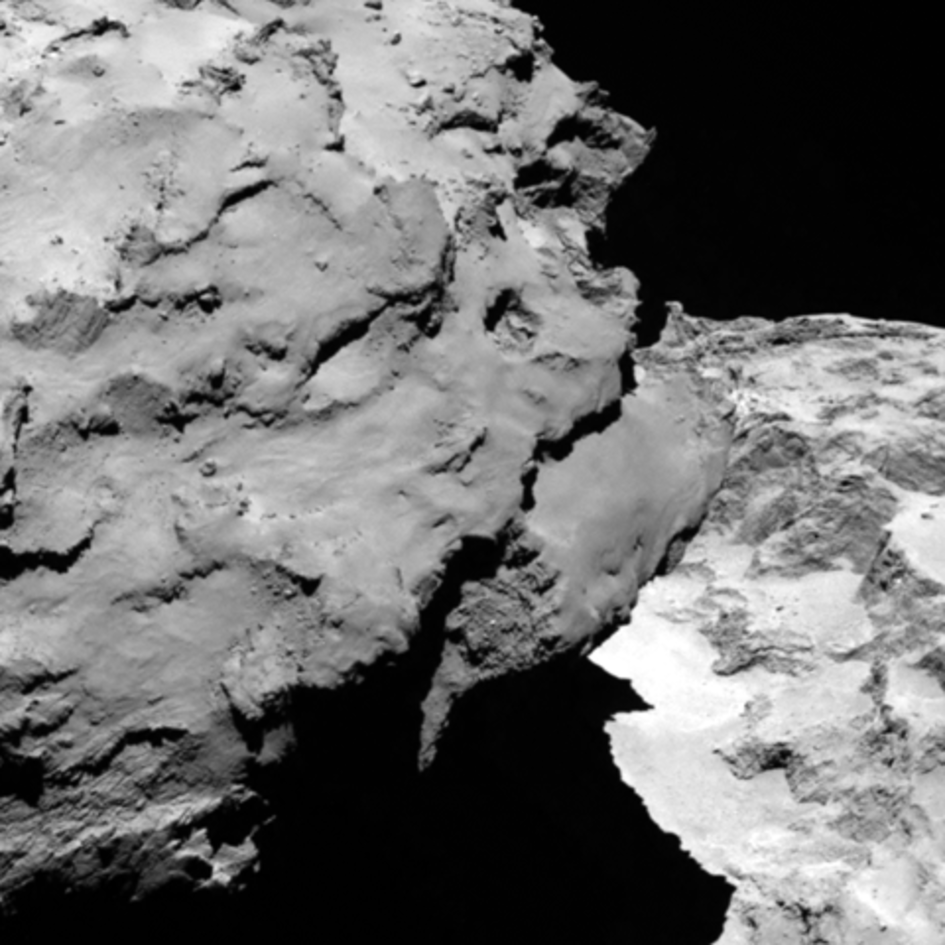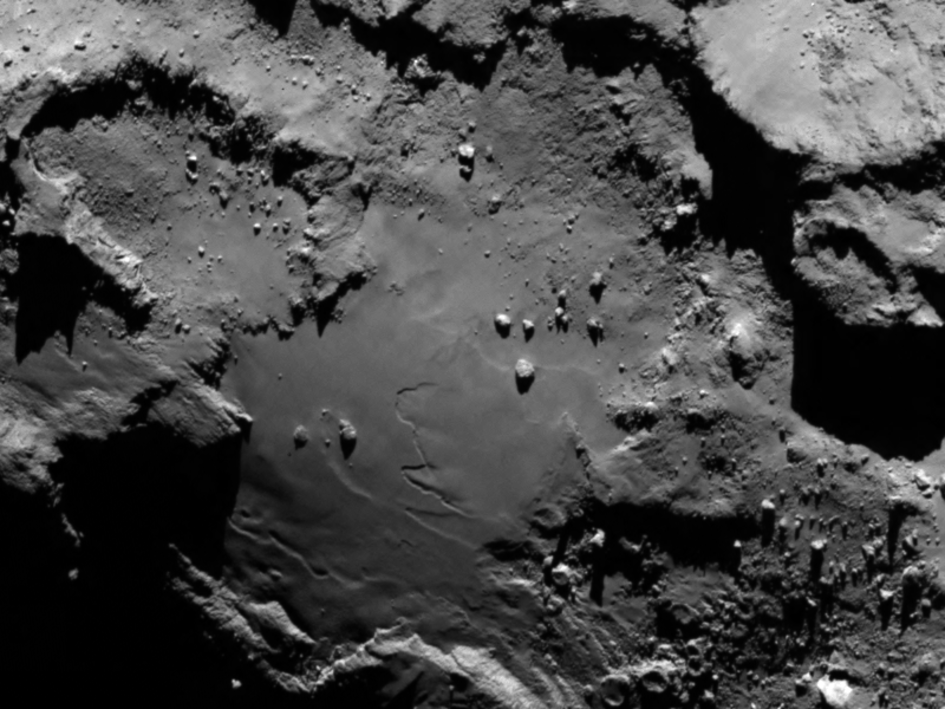2014 August 9
ESA spacecraft Rosetta reaches comet 67P/Churyumov-Gerasimenko
The European Space Agency probe Rosetta has finally reached its destination: Comet 67P/Churyumov-Gerasimenko. The spacecraft is now in station keeping near the nucleus of the comet after taking just over a decade to catch up with it. The spacecraft was launched on 2004 March 2nd with the hope of studying comet 67P/Churyumov-Gerasimenko as it moves in towards the Sun. 67P is a periodic comet which orbits the Sun once every 6.45 years.
Rosetta is the first spacecraft ever to orbit a cometary nucleus. It is also the first spacecraft to accompany a comet as moves in towards the Sun. Comets are essentially dirty ice-balls, and when they are located far out in the solar system they are cold and inert. However, as comets head in towards the Sun they heat up dramatically. Volatile materials on the nucleus of the comet evaporate producing long tails. From its orbital position, Rosetta will be able to study the transformation of 67P as it heats up during its Sun dive.
Philae Lander
Another exciting part of the Rosetta mission is the the Philae lander. This small lander will detach from Rosetta and descend towards the surface of 67P sometime in November 2014. If all goes will, the lander will be able to explore the surface of the comet- no doubt the views the lander will have will be spectacular!
Comets provide us with a window back into the days of the early solar system. They are frozen relics of a time when our solar system was new and quite tumultuous. By studying 67P the Rosetta and Philae mission will help us understand better the conditions and make up of the early solar system. The spacecraft will also be on the look out for organic compounds like amino acids. Amino acids are the building blocks of life, and it has been suggested that the early Earth may have been seeded by comets with its amino acids.
Latest Results
Rosetta has already returned some stunning close up pictures of the comet:

Credits: ESA/Rosetta/MPS for OSIRIS Team MPS/UPD/LAM/IAA/SSO/INTA/UPM/DASP/IDA
This image taken by the OSIRIS wide-angled camera and shows an a number of jets emanating from the nucleus. The spacecraft was just 550km from the surface.

Credits: ESA/Rosetta/MPS for OSIRIS Team MPS/UPD/LAM/IAA/SSO/INTA/UPM/DASP/IDA
In this wonderful image we see a rather impressive cliff. This image was also taken by the OSIRIS camera at a distance of 120km.

Credits: ESA/Rosetta/MPS for OSIRIS Team MPS/UPD/LAM/IAA/SSO/INTA/UPM/DASP/IDA
In this image we see a smoother region on the surface of the comet. The high resolution allows us to see small craters, boulders and steep cliffs. It will be interesting to see how the surface of this comet is transformed as the comet gets closer to the Sun.
This is a most daring and exciting mission, and I’m sure Rosetta will provide us with many splendid scientific results and perhaps some answers to questions about conditions in our early solar system.
| The British Astronomical Association supports amateur astronomers around the UK and the rest of the world. Find out more about the BAA or join us. |
